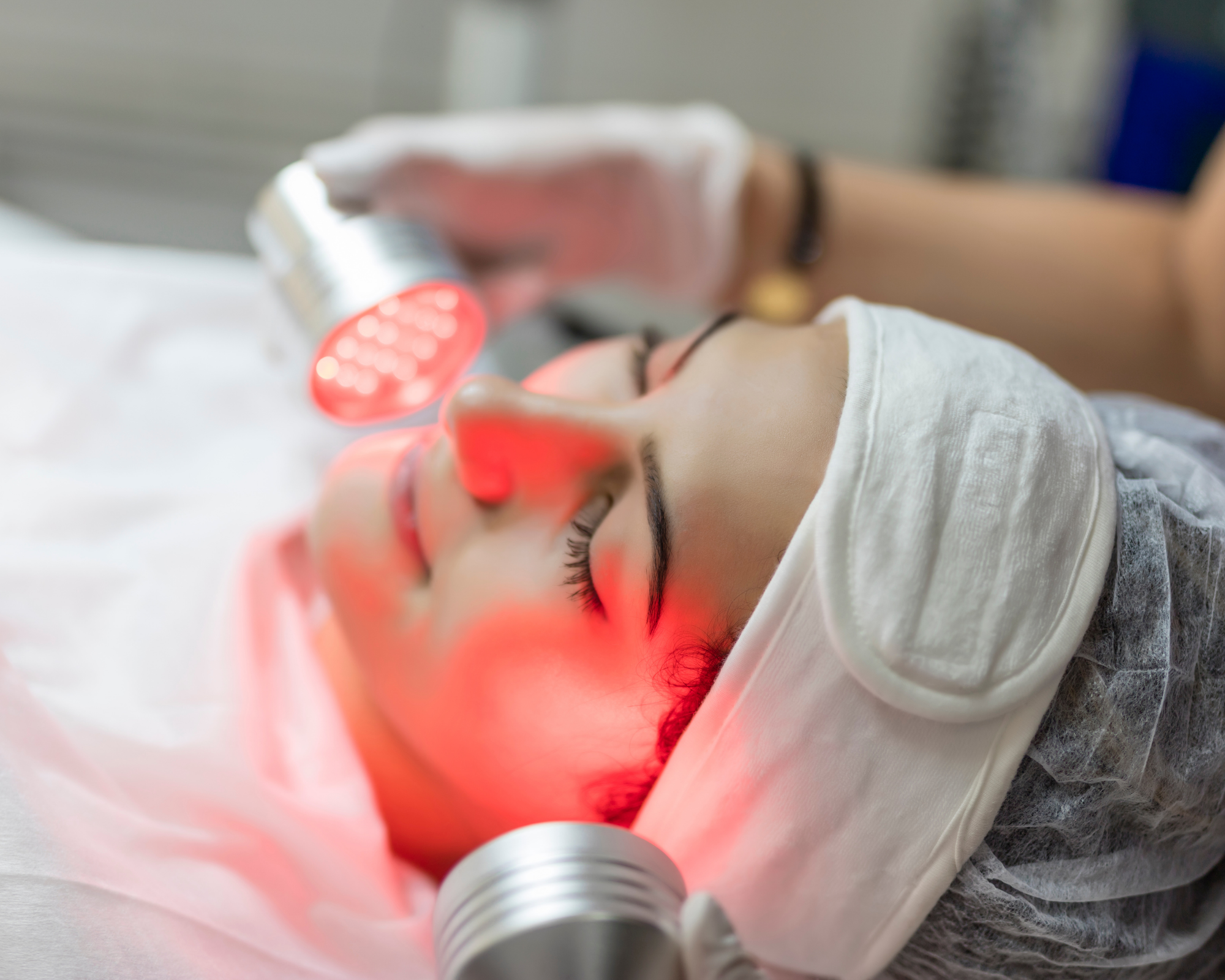Why use red light therapy
Low-level laser light therapy (LLLT), sometimes known as red light therapy, is a drug-free alternative to standard medications. It entails treating skin, pain, and other health issues with a device that produces varying amounts of red light. These red light gadgets employ red and infrared light with wavelengths ranging from 660 nanometers to 800 nanometers.
RED LIGHT THERAPY USES
Red light therapy has proven to be a universal treatment for a variety of disorders and conditions, despite the fact that it is still in its early stages of research. To demonstrate how flexible LLLT is, we've compiled a list of more than 9 studies and publications that look at the effects of red light therapy on a variety of diseases and health situations.
CELLULITE REDUCTION
Cellulite is a disorder in which the skin atop particular regions of fat is dragged down to deeper tissues, resulting in an uneven surface. As a result, the skin becomes uneven and lumpy. Hips, thighs, belly, buttocks, and breasts are the most typical places to find it.
A combination of 850 nm infrared treatment and treadmill exercise was used in a 2011 study including twenty women aged 25 to 55. The participants were split into two groups, one of which received simply treadmill training and the other of which received both treadmill training and cellulite-reducing red light treatment. Over the course of three months, the activity was done twice a week for 45 minutes each time. The red light therapy group had much less cellulite than the treadmill-only treatment group, according to the research.
NECK PAIN
Neck discomfort may be a considerable strain since we continuously tilt our heads during the day. If not treated, it can increase. Neck discomfort, on the other hand, has no specific etiology. Strains, bad sleeping postures, tension, and even wearing heavy necklaces can all contribute to this. Red light therapy for neck pain was found to be an effective treatment in a research of 60 people who had persistent neck discomfort. Red light treatment was proven to enhance range of motion, reduce discomfort, and improve functioning in a six-week trial.
WRINKLES
Wrinkles are a common occurring aspect of aging. However, many variables, such as UV light exposure and smoking, can exacerbate wrinkled skin. Red light therapy skin advantages include wrinkle reduction. In a clinical study evaluating the benefits of LLLT on skin rejuvenation, it was discovered that it was helpful in eliminating wrinkles and boosting skin suppleness. The study discovered substantial wrinkle reductions of up to 36% and enhanced skin elasticity of up to 19%. Furthermore, the study found that LED red light treatment for wrinkle reduction with wavelengths spanning from 830 to 633 nanometers was most effective in skin rejuvenation.
SCARS
When the dermis, the skin's deeper and thicker layer, is injured, scarring develops. To repair the damage caused by the injury, the body creates new collagen fibers, resulting in a scar. This new scar tissue forms after a wound have healed and have a different texture/quality than the surrounding tissue. In a 2004 research investigating the effects of red light treatment on scars, 17 of the 19 patients found it to be successful in decreasing burn scarring. Furthermore, none of the patients had any negative side effects. Adequate collagen is essential for scar removal, and red light treatment stimulates collagen formation.
DEMENTIA
Dementia, a kind of Alzheimer's disease, is an illness that impairs memory and cognitive ability. While there is no treatment for this ailment, it has been shown that red light therapy may help to alleviate symptoms.
Transcranial light treatment was used for 12 weeks on dementia patients in a 2017 research, and the results were positive. The patients described the following symptoms:
- Increased cognitive function
- Improved sleep
- Fewer angry outbursts
- Less anxiety
- And less wandering.
It should be mentioned, however, that additional research is needed to fully comprehend the potential of red light treatment for dementia.
TENDONITIS
Tendonitis occurs when the tissues that link muscle to bone become inflamed, resulting in discomfort and irritation. This therapy was proven to be beneficial in shortening the return to play period in 15-month research comprising 395 sports injuries, including sprains, strains, tendonitis, and more. 830 nm LED phototherapy treatments dramatically and safely decreased the time it took to return to play. It should be emphasized, however, that there was no control group, and more research on red light treatment for tendonitis needed.
Another seven-person research found that LLLT improves inflammation and discomfort in Achilles tendinitis sufferers.
OSTEOARTHRITIS
The most prevalent kind of arthritis is osteoarthritis, which develops when the cartilage between the bones begins to degenerate. This causes the bones to rub against one other, resulting in discomfort and edema. While there is no cure for arthritis, red light therapy has been tried as a treatment for osteoarthritis. A total of 50 individuals with both knee osteoarthritis were split into three groups:
- Red: 15 total
- Infrared: 18 total
- Placebo: 17 total
After that, each patient self-administered 15-minute treatments twice a day for ten days. The pain decreased in the red and infrared groups was greater than 50% following treatment, while the placebo group had no meaningful pain relief. The study found that low-level laser therapy (LLLT) was helpful in reducing pain and impairment associated with osteoarthritis of the knee.
SUN DAMAGE
When sunlight strikes bare skin, it damages it on a molecular level. Wrinkling, pigmentation changes (age spots, liver spots, and freckles), reduced elasticity, uneven skin texture, broken capillaries, and redness & blotchiness are all signs of photoaging. The efficacy of combined 633 nm and 830 nm LED therapy on photo-damaged skin was tested in a 2006 research. The study included 36 patients who got nine treatments over the course of five weeks and were assessed 12 weeks afterward. The majority of the participants in the research reported improved skin softness, smoothness, and firmness. As a result, red light therapy for sun damage has been determined to be an effective treatment.
While additional research and studies are needed, there is no denying the many benefits of red light treatment for injuries, pain, skin, and other ailments. Current research showing the numerous applications of red LED light therapy demonstrates that it is a diverse therapeutic option.



